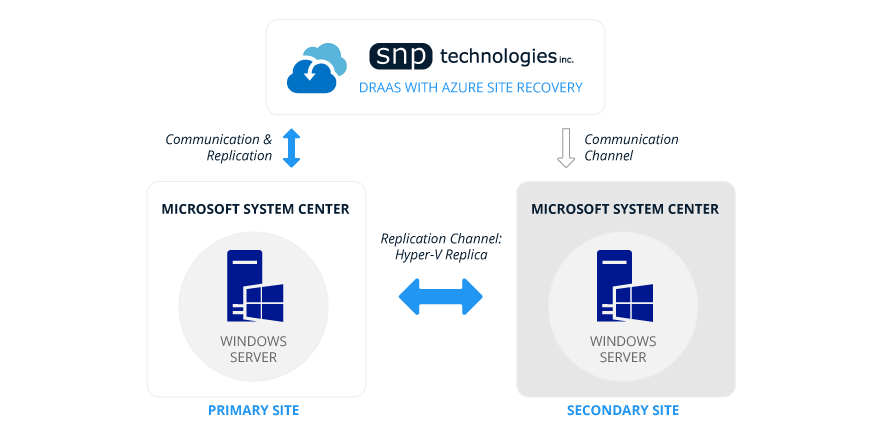
Stay Disaster Ready with Azure Site Recovery
Today, organizations need to have a business continuity and disaster recovery (BCDR) strategy in place for unforeseen instances, ranging from server meltdowns and ransomware attacks to natural disasters. Azure Site Recovery (ASR) ensures all your workloads and data is safe and always available by orchestrating replication, performing DR testing and running failovers and failbacks.
As a Microsoft Gold partner for Cloud Platform, SNP helps enterprises assess, plan and transition from legacy DR approaches to a modern, flexible disaster recovery approach that fits their needs in prioritizing application recovery. This approach ensures a manageable plan for IT resources and achieves business continuity in the most seamless way possible by incorporating Azure Site Recovery technology.
ASR works with Windows- or Linux-based servers on many hosts, such as physical servers, VMware or Hyper-V virtual machines (VMs). Users also have access to an automation library, which includes specific scripts for their applications, and the ability to customize replication solutions on an app-by-app basis.
Some of the key features of ASR include:
- Integration with SQL Server Always-On and partnerships with other replication technologies, such as Oracle Data Guard and Exchange Database Availability Groups (DAGs).
- Advanced network management, which gives users the ability to reserve IP addresses, configure load-balancing, and integrate with Azure Traffic Manager.
- The ability to recover an entire application script or include external scripts and manual actions in your flexible recovery plans.
- Integrates with Microsoft applications, including SharePoint, Exchange, Dynamics, SQL Server and Active Directory.
- Automated protection and replication of VMs and remote health monitoring.
- No-impact recovery plan testing and orchestrated recovery when necessary.
Additional benefits of ASR include:
Automated Protection:
- ASR is automated, monitored and controlled by you. Users can set their own control policies of the replication of their VMs.
- Users can use either Azure or a secondary data center as a recovery site.
- ASR integrates with existing technologies to coordinate and manage the ongoing replication of data.
Continuous Health Monitoring & Security:
- Your protected instances are continuously and remotely monitored during Azure Site Recovery.
- The data replication of your VMs remains on your network when replicating between the sites you control, and all communication with Azure is encrypted.
- ASR does not intercept replicated data between your servers and Azure storage or a secondary site of your choice. Other than administrative users, no one has any information about what’s running on your VMs or physical servers.
Disaster Recovery:
- Users can automate processes for DR in the event of a site outage. This orchestrated DR as a Service (DRaaS) allows you to import applications in an orchestrated way to quickly restore service.
- Users also have the freedom to map virtual networks, customizing networks between their primary and recovery sites.
It's on Azure:
- With ASR, users have easier options to replicate their workloads to Azure. You can either migrate your applications to Azure or temporarily move them when there is a surge in demand.
- You can test new versions of the application with live data and implement it into production in your datacenter.
- Run reports and analytics on copies of production workloads in Azure without impacting users.
For more on how Azure Site Recovery can be a reliable DR strategy for your business, Contact SNP Here.





